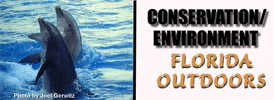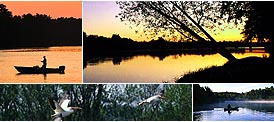
Cypress Swamps | Hardwood Swamps | Freshwater Marshes | Beaches & Dunes | Maritime Forest | Salt Marsh | Mangroves


Of all the state's upland habitats, the scrub is the most unique. For the most part, scrub is dominated by a mix of four large shrub-sized oaks (myrtle, Chapman's, scrub, and sand live oaks), saw palmetto, rusty lyonia, and Florida rosemary. Some scrub areas may have stands of the tree-sized sand pine. The size and density of these stands ranges from relatively dense to widely scattered.
Scrub is found on the slightly higher lands near the high pine habitat. As such, it is another of Florida's fire dependent communities. The soil is exceedingly nutrient poor in these highly drained ecosystems. Consequently, most plants grow very slow and are stunted from lack of nutrients. It is also not unusual to see open patches of sandy soil in the scrub habitat.
The land historically occupied by scrub habitats is also some of Florida's higher, and most sought after land for development. Much of the scrub habitat is now gone, replaced by housing developments and citrus groves. Well preserved examples of the scrub habitat are limited to parts of the Ocala National Forest, the Lake Whales Ridge, along Atlantic coast from Cape Canaveral to West Palm Beach and along the panhandle coast from Ft. Walton Beach to Alligator Point.












